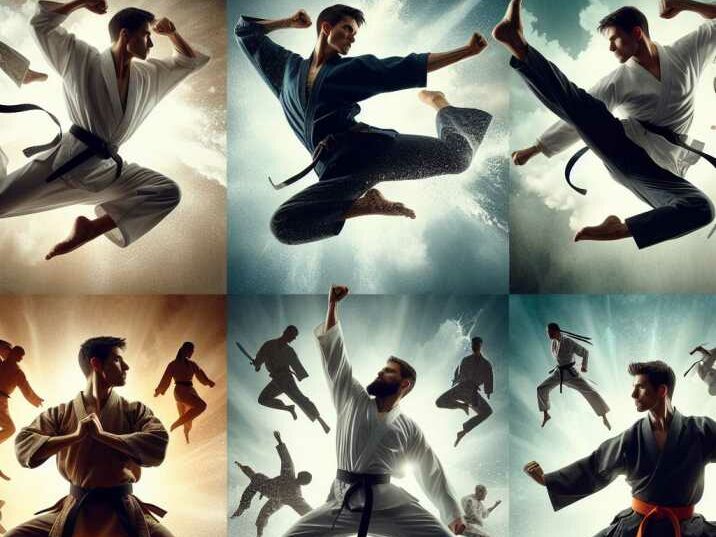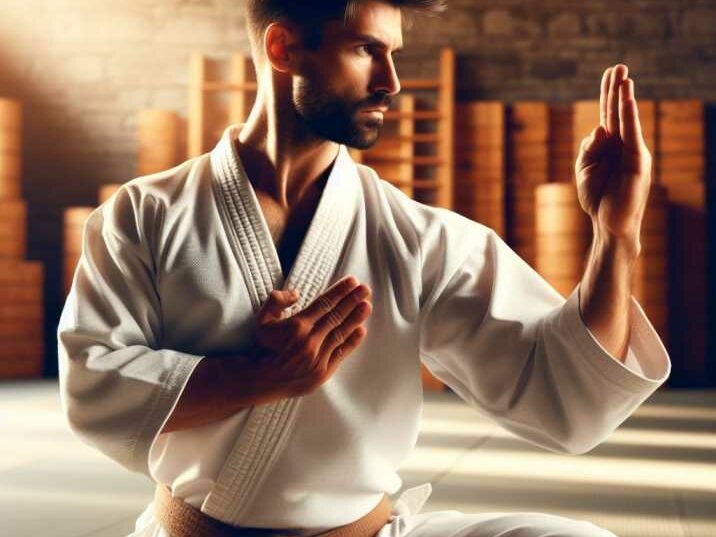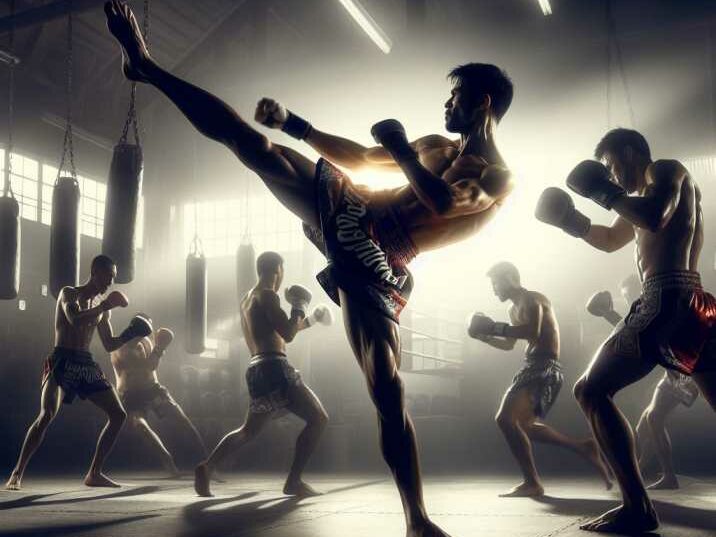Introduction
Table of Contents
Martial arts styles encompass a rich tapestry of traditions, techniques, and philosophies that have evolved over centuries. From the graceful movements of Tai Chi to the explosive power of Muay Thai, each style offers unique insights into self-defense, discipline, and personal growth. In this comprehensive guide, we will delve into the fascinating world of martial arts styles, exploring their origins, techniques, and practical applications.

Table of Contents
- Introduction to Martial Arts
- The Origins of Martial Arts
- Philosophy Behind Martial Arts
- Benefits of Practicing Martial Arts
- Popular Martial Arts Styles
- Karate: The Way of the Empty Hand
- Taekwondo: The Art of Foot and Fist
- Jiu-Jitsu: The Gentle Art
- Kung Fu: The Chinese Martial Arts
- Muay Thai: The Art of Eight Limbs
- Brazilian Jiu-Jitsu: The Ground Fighting Style
- Choosing the Right Martial Art for You
- Understanding Your Goals and Objectives
- Considering Physical Fitness and Health
- Exploring Different Training Environments
- Training and Techniques
- Basics of Stance and Footwork
- Essential Strikes, Blocks, and Grappling Techniques
- Sparring and Partner Drills
- Mastering Your Martial Art
- Commitment to Practice and Consistency
- Continual Learning and Improvement
- Incorporating Martial Arts into Daily Life
1. Introduction to Martial Arts
The Origins of Martial Arts
Martial arts have deep roots in ancient civilizations, with origins tracing back to various cultures across the globe. In China, the legendary Shaolin Monastery is renowned for its role in the development of Kung Fu. Meanwhile, Japanese martial arts like Karate and Judo have been influenced by the samurai warrior traditions. Each culture has contributed to the rich tapestry of martial arts, blending combat techniques with spiritual and philosophical insights.
Philosophy Behind Martial Arts
Central to many martial arts styles is the philosophy of discipline, respect, and self-improvement. Practitioners are encouraged to cultivate not only physical strength but also mental fortitude and emotional resilience. Concepts such as humility, perseverance, and integrity are often emphasized, shaping the character of martial artists both on and off the mat.
Benefits of Practicing Martial Arts
The practice of martial arts offers a multitude of benefits beyond self-defense. Regular training can improve cardiovascular health, flexibility, and coordination. Moreover, martial arts provide valuable lessons in self-discipline, focus, and stress management. For children and adults alike, martial arts offer a holistic approach to personal development, fostering confidence, resilience, and a sense of community.
2. Popular Martial Arts Styles
Karate: The Way of the Empty Hand
Karate originated in Okinawa and later spread to Japan, where it gained widespread popularity. Characterized by powerful strikes, blocks, and kata (forms), Karate emphasizes the development of speed, agility, and precision. Practitioners of Karate learn to harness their body’s natural energy to deliver decisive blows while maintaining a calm and focused mind.

Taekwondo: The Art of Foot and Fist
Taekwondo, a Korean martial art, is known for its dynamic kicks and fast-paced sparring techniques. With an emphasis on flexibility and agility, Taekwondo practitioners develop lightning-fast reflexes and explosive power. In addition to its effectiveness as a self-defense system, Taekwondo promotes values such as courtesy, integrity, and perseverance.
Jiu-Jitsu: The Gentle Art
Brazilian Jiu-Jitsu (BJJ) is a grappling-based martial art that focuses on leverage and technique rather than brute strength. Originating from Japanese Jujutsu, BJJ emphasizes ground fighting and submission holds, making it an effective martial art for self-defense and competitive grappling. With its emphasis on strategy and positional control, BJJ practitioners learn to overcome larger opponents through skill and technique.
Kung Fu: The Chinese Martial Arts
Kung Fu encompasses a diverse range of Chinese martial arts styles, each with its own unique techniques and philosophy. From the fluid movements of Tai Chi to the explosive strikes of Wing Chun, Kung Fu offers a holistic approach to combat and self-cultivation. Practitioners of Kung Fu learn to harmonize mind, body, and spirit, achieving a balance of power, grace, and inner peace.
Muay Thai: The Art of Eight Limbs
Muay Thai, also known as Thai boxing, is a striking-based martial art that utilizes punches, kicks, elbows, and knee strikes. With its relentless pace and ferocious techniques, Muay Thai is considered one of the most effective stand-up fighting styles in the world. Practitioners of Muay Thai develop incredible cardiovascular endurance, strength, and mental toughness through rigorous training and sparring.

Brazilian Jiu-Jitsu: The Ground Fighting Style
Originating from Judo and traditional Japanese Jiu-Jitsu, Brazilian Jiu-Jitsu (BJJ) focuses on ground fighting and submission grappling. Unlike other martial arts that rely on striking, BJJ practitioners aim to control their opponent through positional dominance and leverage, ultimately submitting them with joint locks or chokeholds. With its emphasis on technique over strength, BJJ is suitable for practitioners of all ages and body types.
3. Choosing the Right Martial Art for You
Understanding Your Goals and Objectives
Before embarking on your martial arts journey, it’s essential to clarify your goals and objectives. Are you seeking self-defense skills, physical fitness, or personal development? Understanding your motivations will help you choose a martial art that aligns with your interests and aspirations.
Considering Physical Fitness and Health
Different martial arts styles place varying demands on physical fitness and health. While some styles prioritize explosive power and strength, others focus on flexibility, agility, and endurance. Consider your current fitness level and any pre-existing medical conditions when selecting a martial art to ensure a safe and enjoyable training experience.
Exploring Different Training Environments
The training environment plays a crucial role in your martial arts journey. Some practitioners thrive in traditional dojos with a structured curriculum and disciplined atmosphere, while others prefer informal gym settings with a focus on practical application and sparring. Visit local martial arts schools, attend trial classes, and speak with instructors and fellow students to find a training environment that suits your preferences and learning style.
4. Training and Techniques
Basics of Stance and Footwork
A solid foundation in stance and footwork is essential for any martial artist. Whether you’re throwing a punch, executing a kick, or evading an opponent’s attack, proper body mechanics and balance are paramount. Practice fundamental stances such as the horse stance, front stance, and side stance to develop stability, mobility, and agility.
Essential Strikes, Blocks, and Grappling Techniques
Martial arts techniques can be categorized into strikes, blocks, and grappling maneuvers. Strikes include punches, kicks, elbows, and knee strikes, while blocks are used to defend against incoming attacks. Grappling techniques encompass throws, takedowns, joint locks, and submission holds, allowing practitioners to control and immobilize their opponents.
Sparring and Partner Drills
Sparring and partner drills are integral components of martial arts training, providing practitioners with opportunities to test their skills in a controlled environment. Through sparring sessions, practitioners learn to apply techniques under pressure, develop timing and distance management, and hone their defensive instincts. Partner drills allow for focused repetition of specific techniques, fostering muscle memory and reflexive responses.
5. Mastering Your Martial Art
Commitment to Practice and Consistency
Like any skill or discipline, mastery of martial arts requires dedication, commitment, and consistent practice. Set realistic goals, establish a training routine, and prioritize consistency over intensity. Whether you’re training for competition or personal development, make martial arts a regular part of your life and embrace the journey of continual learning and improvement.
Continual Learning and Improvement
The journey of martial arts is one of continual learning and improvement. Seek guidance from experienced instructors, attend workshops and seminars, and study supplementary resources such as books, videos, and online tutorials. Remain open-minded and receptive to feedback, and be willing to adapt and evolve your techniques and strategies as you progress on your martial arts journey.
Incorporating Martial Arts into Daily Life
Beyond the confines of the dojo or gym, martial arts offers valuable lessons and principles that can be applied to everyday life. Whether it’s maintaining composure under pressure, setting and achieving goals, or fostering resilience in the face of adversity, the principles of martial arts can empower individuals to navigate life’s challenges with confidence and grace.
This table provides a quick overview of each martial art’s origin, key characteristics, and benefits, helping readers understand the unique aspects of each style at a glance.
Conclusion
In conclusion, martial arts styles offer a diverse array of techniques, philosophies, and benefits for practitioners of all ages and backgrounds. Whether you’re drawn to the striking arts of Karate and Muay Thai or the grappling arts of Jiu-Jitsu and Taekwondo, there’s a martial art to suit every preference and goal. By understanding the origins, principles, and practical applications of various martial arts styles, individuals can embark on a rewarding journey of self-discovery, personal growth, and physical mastery. So, take the first step on your martial arts journey today and discover the transformative power of the martial arts.
Frequently asked questions (FAQs)
1. What is the best martial art for self-defense?
- While there isn’t a definitive answer as the effectiveness of martial arts depends on various factors such as individual preferences, physical abilities, and training, some martial arts known for their practical self-defense techniques include Krav Maga, Brazilian Jiu-Jitsu, and Muay Thai. It’s essential to choose a style that aligns with your goals and offers realistic training scenarios.
2. Can I practice martial arts if I’m not in top physical condition?
- Absolutely! Martial arts cater to individuals of all fitness levels and ages. Many styles offer beginner-friendly classes that focus on building strength, flexibility, and endurance gradually. With consistent practice and dedication, you can improve your physical fitness and martial arts skills over time.
3. Are martial arts only about fighting?
- While martial arts encompass self-defense techniques and combat training, they also promote personal development, mental discipline, and spiritual growth. Many practitioners value martial arts for their holistic approach to health and wellness, emphasizing values such as respect, integrity, and self-discipline both on and off the mat.
4. How long does it take to become proficient in a martial art?
- The time it takes to become proficient in a martial art varies depending on individual factors such as dedication, natural aptitude, and frequency of training. While some practitioners may progress quickly with focused training, others may require more time to develop their skills. Consistent practice, patience, and guidance from experienced instructors are key to improvement.
5. Can children benefit from practicing martial arts?
- Yes, martial arts offer numerous benefits for children, including improved physical fitness, discipline, self-confidence, and respect for others. Many martial arts schools offer specialized classes for children that focus on age-appropriate techniques, character development, and anti-bullying strategies. Additionally, martial arts provide a safe and structured environment for children to learn valuable life skills while having fun and making new friends.


